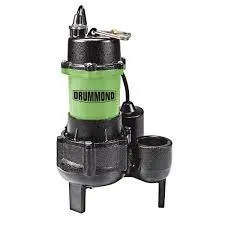English
- Afrikaans
- Albanian
- Amharic
- Arabic
- Armenian
- Azerbaijani
- Basque
- Belarusian
- Bengali
- Bosnian
- Bulgarian
- Catalan
- Cebuano
- Corsican
- Croatian
- Czech
- Danish
- Dutch
- English
- Esperanto
- Estonian
- Finnish
- French
- Frisian
- Galician
- Georgian
- German
- Greek
- Gujarati
- Haitian Creole
- hausa
- hawaiian
- Hebrew
- Hindi
- Miao
- Hungarian
- Icelandic
- igbo
- Indonesian
- irish
- Italian
- Japanese
- Javanese
- Kannada
- kazakh
- Khmer
- Rwandese
- Korean
- Kurdish
- Kyrgyz
- Lao
- Latin
- Latvian
- Lithuanian
- Luxembourgish
- Macedonian
- Malgashi
- Malay
- Malayalam
- Maltese
- Maori
- Marathi
- Mongolian
- Myanmar
- Nepali
- Norwegian
- Norwegian
- Occitan
- Pashto
- Persian
- Polish
- Portuguese
- Punjabi
- Romanian
- Russian
- Samoan
- Scottish Gaelic
- Serbian
- Sesotho
- Shona
- Sindhi
- Sinhala
- Slovak
- Slovenian
- Somali
- Spanish
- Sundanese
- Swahili
- Swedish
- Tagalog
- Tajik
- Tamil
- Tatar
- Telugu
- Thai
- Turkish
- Turkmen
- Ukrainian
- Urdu
- Uighur
- Uzbek
- Vietnamese
- Welsh
- Bantu
- Yiddish
- Yoruba
- Zulu
Telephone: +86 13120555503
Email: frank@cypump.com
Aug . 13, 2024 17:00 Back to list
Techniques for Efficiently Pumping Sand and Slurry Mixtures in Industrial Applications
Pumping Sand Slurry Techniques, Challenges, and Applications
Pumping sand slurry is a critical process in various industries, particularly in mining, construction, and environmental remediation. The term sand slurry refers to a mixture of sand and water, where the viscosity and density of the fluid can pose unique challenges during transportation and pumping. Understanding the techniques and considerations involved in pumping sand slurry is essential for ensuring efficiency, safety, and cost-effectiveness.
Techniques for Pumping Sand Slurry
Pumping sand slurry typically requires specialized equipment designed to handle thick, abrasive materials. The main types of pumps used in this process include centrifugal pumps, positive displacement pumps, and submersible pumps.
1. Centrifugal Pumps These pumps are the most commonly used for transporting sand slurry due to their ability to generate high flow rates. They operate by converting rotational energy into hydrodynamic energy. However, the performance of centrifugal pumps can be significantly affected by the slurry's viscosity and the concentration of solids. Therefore, proper pump sizing and selection are crucial for optimal operation.
2. Positive Displacement Pumps These pumps are sometimes preferred for higher concentrations of solids or thicker slurries. They work by trapping a fixed amount of fluid and forcing it through the discharge pipe. This mechanism ensures that the flow rate remains consistent, even with varying pressures. Gear pumps, diaphragm pumps, and screw pumps are common types of positive displacement pumps that can effectively handle sand slurries.
3. Submersible Pumps In applications where the sand slurry is located underwater, submersible pumps are essential. These pumps are submerged in the slurry and can efficiently transport the mixture to the surface or into a pipeline.
Challenges in Pumping Sand Slurry
Pumping sand slurry presents several challenges, primarily due to the abrasive nature of sand and the potential for settling and clogging
. Some of the main challenges includepumping sand slurry

- Wear and Tear on Equipment The abrasive particles in sand can cause significant wear on pump components, leading to increased maintenance costs and reduced equipment lifespan. Using wear-resistant materials and protective coatings can help mitigate this issue.
- Settling of Particles When not in motion, sand particles tend to settle at the bottom of the pumping system. This can lead to blockages and inefficient flow. Proper system design, including maintaining sufficient velocity in the pipeline, is necessary to keep the particles suspended.
- Viscosity Management Variations in the water content of the slurry can change its viscosity, affecting pump efficiency. Managing the mixture's consistency by adjusting the water ratio or employing additives can prevent pump cavitation and improve performance.
Applications of Sand Slurry Pumping
The applications of pumping sand slurry are extensive. In the mining industry, sand slurry is often transported from extraction sites to processing facilities. It plays a vital role in mineral extraction processes, where raw materials are mixed with water to facilitate separation and processing.
In construction, pumping sand slurry is crucial for transporting materials for concrete production and other construction activities. Additionally, this technique is utilized in dredging operations, where sediment from waterways needs to be removed and relocated.
Environmental remediation projects also benefit from sand slurry pumping, particularly in applications involving the containment and removal of contaminated sediments from lakes and rivers. By effectively managing and transporting these slurries, environmental engineers can significantly aid in restoration efforts.
Conclusion
Pumping sand slurry is a complex yet essential operation across multiple industries. Innovative pumping technologies, combined with strategic management of the associated challenges, enable more efficient use of resources and improved project outcomes. As industries continue to advance, the development of more effective pumping solutions will remain a key focus, ensuring the successful handling of sand slurries worldwide.
-
ISG Series Vertical Pipeline Pump - Chi Yuan Pumps Co., LTD.|Advanced Hydraulic Design&Energy-Efficient Solutions
NewsJul.30,2025
-
ISG Series Vertical Pipeline Pump - Chi Yuan Pumps Co., LTD.
NewsJul.30,2025
-
ISG Series Vertical Pipeline Pump - Chi Yuan Pumps Co., LTD.|energy-efficient fluid handling&industrial durability
NewsJul.30,2025
-
ISG Series Vertical Pipeline Pump - Chi Yuan Pumps | Advanced Engineering&Industrial Efficiency
NewsJul.30,2025
-
ISG Series Pipeline Pump - Chi Yuan Pumps | High Efficiency, Energy Saving
NewsJul.30,2025
-
ISG Series Vertical Pipeline Pump-Chi Yuan Pumps|High Efficiency&Reliable Performance
NewsJul.29,2025










